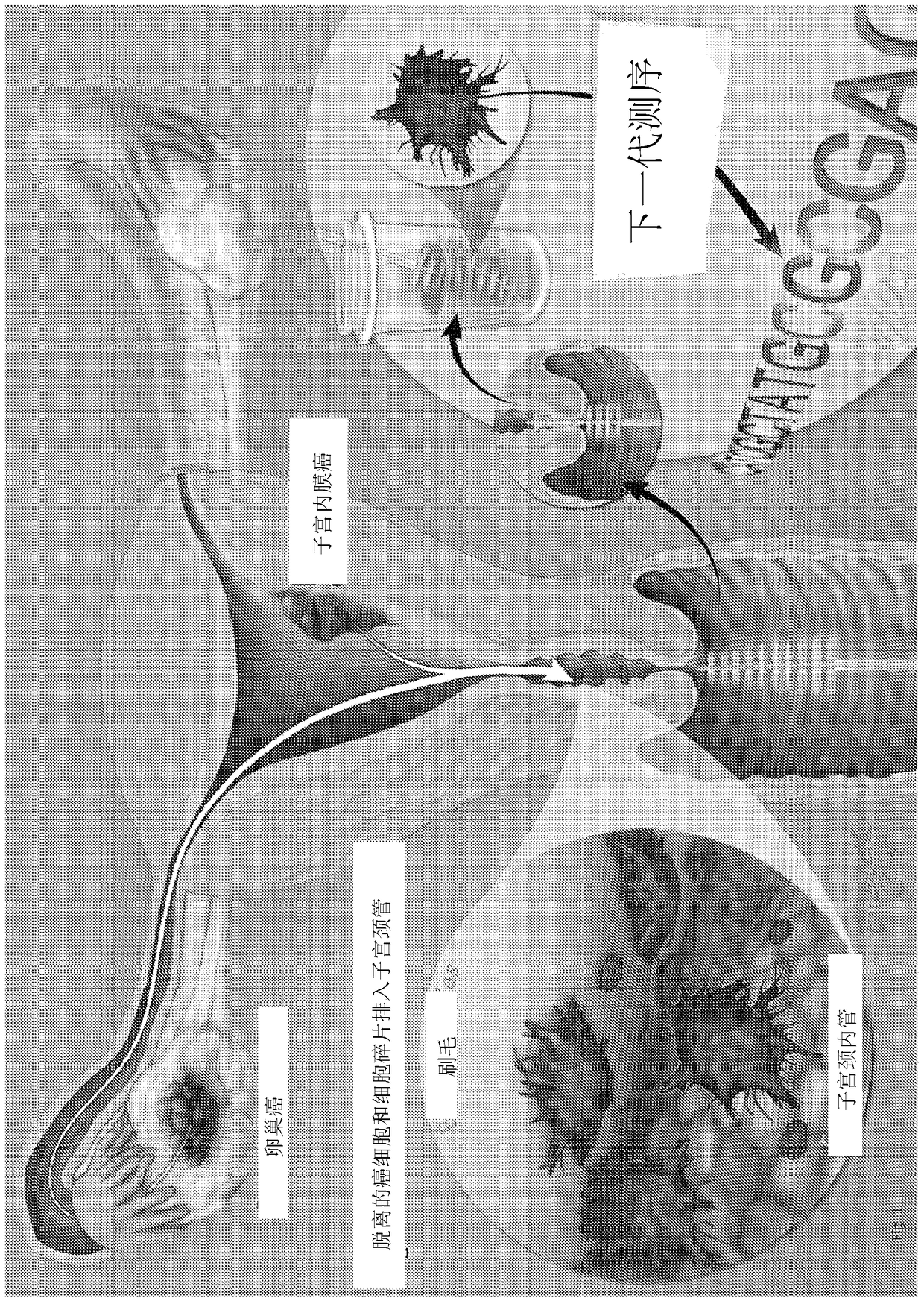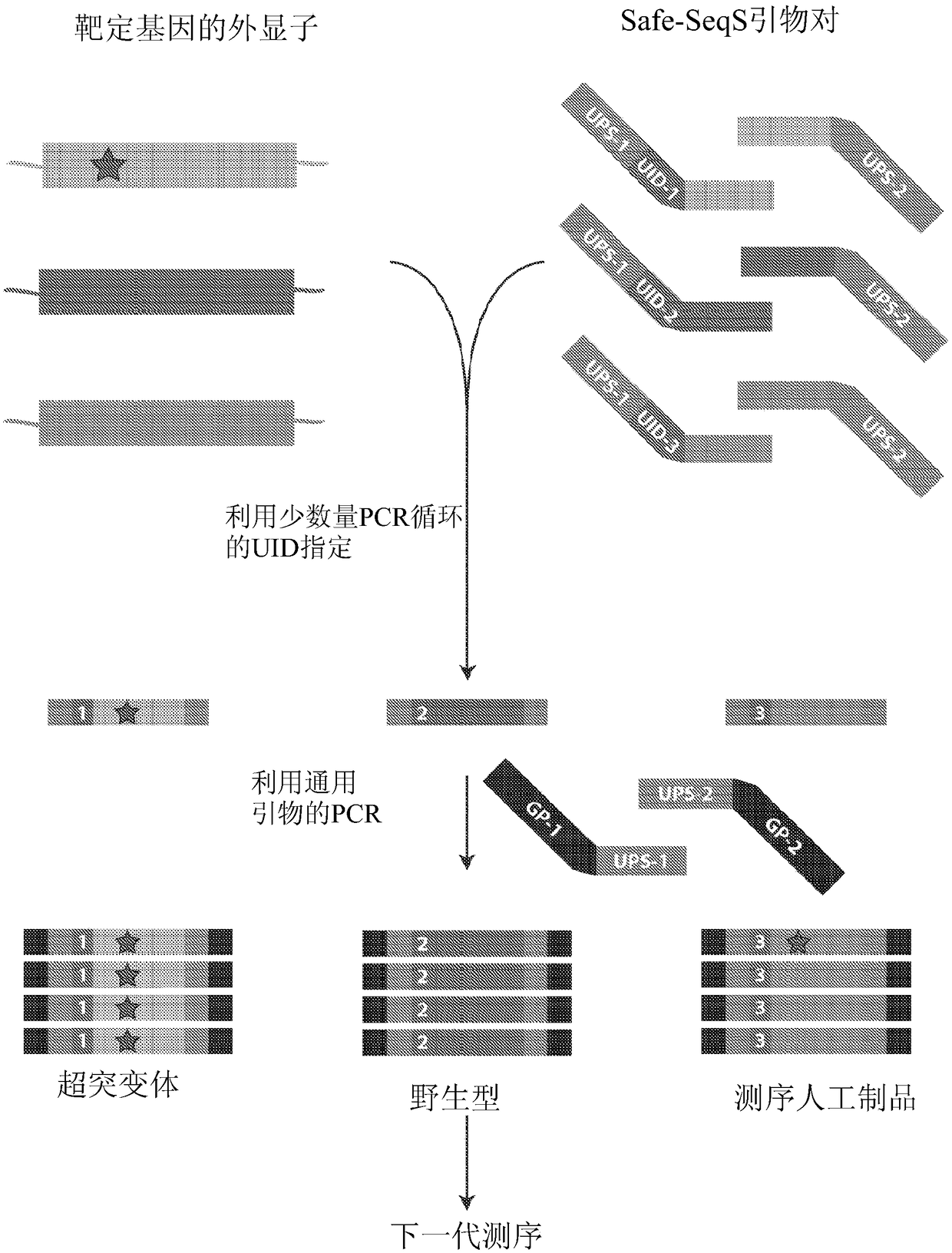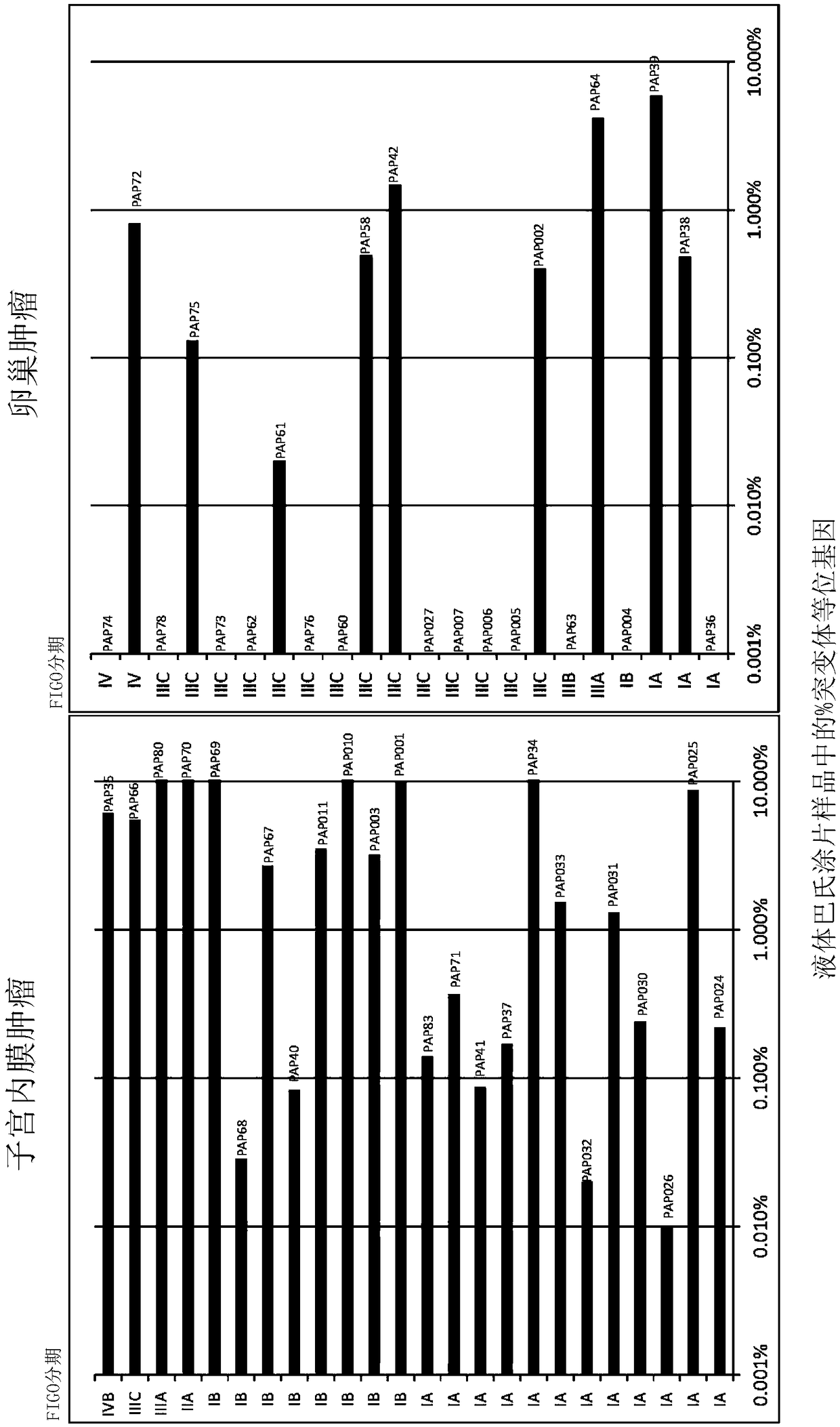Papanicolaou test for ovarian and endometrial cancers
A technology for endometrial cancer and ovarian cancer, which is applied in the field of ovarian cancer and endometrial cancer, and can solve problems such as differentiation
- Summary
- Abstract
- Description
- Claims
- Application Information
AI Technical Summary
Problems solved by technology
Method used
Image
Examples
Embodiment 1
[0046] The inventors speculate that more sophisticated molecular methods may be able to detect the presence of cancer cells in endocervical samples with greater sensitivity and specificity than conventional methods. In particular, the present invention hypothesizes that somatic mutations characteristic of endometrial and ovarian cancers will be detected in conventional fluid-based Pap smears (hereinafter referred to as "Pap smears"; figure 1 ) found in purified DNA. Unlike cytologically abnormal cells, this oncogenic DNA mutation is a specific clonal marker of neoplasia that should be absent in non-neoplastic cells. However, the inventors do not know whether such DNA is actually present in the endocervical sample, and the inventors do not know whether they are present in sufficient quantities to detect them. The experiments described herein were performed to test the hypothesis of the present invention.
[0047]There were four parts to this study: I. Identification of somati...
Embodiment 2
[0049] Incidence of somatically mutated genes in endometrial and ovarian cancer
[0050] There are five major histopathological subtypes of ovarian cancer. The most prevalent subtype was high-grade serous (60% of the total), followed by endometrioid (15%), clear cell (10%), and low-grade serous carcinoma (8%) (Table 1). Genome-wide studies have identified the most frequently mutated genes in the most prevalent subtypes of ovarian cancer (Table 2) (23-25).
[0051] Such a comprehensive study of the endometrioid and mucinous subtypes, which together represent ~20% of ovarian cancer cases (Table 1 ), has not been reported. However, genes that are commonly mutated in the endometrioid and mucinous subtypes have been reported (26). Overall, the most commonly mutated gene in epithelial ovarian cancer was TP53, which was mutated in 69% of these cancers (Table 2). Other highly mutated genes included ARID1A, BRAF, CTNNB1, KRAS, PIK3CA, and PPP2R1A (Table 2).
[0052] In endometrial ...
Embodiment 3
[0058] Identify mutations in tumor tissue
[0059] The inventors obtained tumors from 46 cancer patients for whom Pap smears were available. This included 24 patients with endometrial cancer and 22 patients with ovarian cancer; clinical and histopathological features are listed in Table S3.
[0060] Somatic mutations were identified in 46 tumors by whole-exome sequencing as described above or by targeted sequencing of genes frequently mutated in the most common subtypes of ovarian or endometrial cancer (Table 2). Enrichment of these genes is achieved using a custom solid-phase capture assay comprising oligonucleotides ("capture probes") complementary to a panel of gene regions of interest. For oncogenes, the inventors only targeted their commonly mutated exons, but the inventors targeted the entire coding region of tumor suppressor genes.
[0061] Illumina DNA sequencing libraries were generated from tumors and their matched non-neoplastic tissues, which were then captured u...
PUM
 Login to View More
Login to View More Abstract
Description
Claims
Application Information
 Login to View More
Login to View More - R&D
- Intellectual Property
- Life Sciences
- Materials
- Tech Scout
- Unparalleled Data Quality
- Higher Quality Content
- 60% Fewer Hallucinations
Browse by: Latest US Patents, China's latest patents, Technical Efficacy Thesaurus, Application Domain, Technology Topic, Popular Technical Reports.
© 2025 PatSnap. All rights reserved.Legal|Privacy policy|Modern Slavery Act Transparency Statement|Sitemap|About US| Contact US: help@patsnap.com



